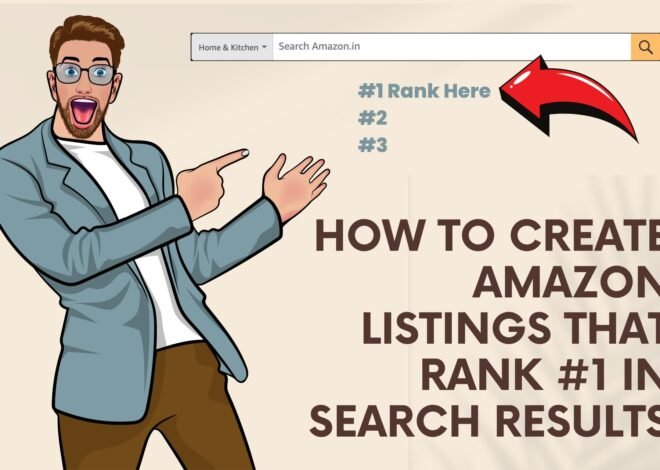
Contextual Advertising: Pros, Cons, and Key Considerations
Contextual advertising is a proven way to tell potential clients about yourself. But, like any promotion format, it has its advantages and disadvantages. And what is not suitable for one business may suit another. We tried to describe the features of this type of advertising and asked three experts for comments. Also read their advice on what companies should consider when deciding whether to give contextual advertising.
Advantages of contextual advertising
1. Starts working immediately
Ads are displayed immediately after you have launched contextual advertising and it has passed moderation – this usually takes a maximum of one day. In comparison, SEO optimization gives the first results after months.
This is an opportunity for a quick start for new resources with low traffic. They may not get to the top of organic search results anytime soon, and it is heavily occupied by older and larger competitors. And context is already spinning and bringing in clients. Of course, you can’t seriously discuss “contextual advertising vs. SEO”, but there really are differences.
2. You clearly understand what you are paying for
When selecting keywords, you immediately see the recommended bid per click for each of them. It is important to understand that this is approximate information. But you can get a general idea of the click price and the level of competition. This is a pretty powerful advantage of contextual advertising on search and in the KMS.
You set your daily budget for campaigns yourself. And the system warns you about the potential reach in clicks and impressions with such investments. And when the money is spent, the interface displays all the expenses for the advertising campaign. In short, everything is as transparent as possible.
3. This is traffic from potentially interested users.
Thanks to the settings, the ad is shown not to everyone, but only to those users who are similar to your target audience. For example, a business runs ads for commercial queries – “buy”, “order”, and minuses informational ones – “what is”, “how to … do it yourself”. This narrows the audience, but people who are initially set on buying go to the site.
When placing ads in the KMS, the system carefully selects the sites where the ads will be shown. It analyzes the user’s interests, the page content so that it matches your topic, the reliability of the site, and much more.
4. You choose who and where to show ads
When launching a campaign, there are many settings to ensure that your ads are shown to your target audience. The simplest of these are: age, gender, device, user location — up to a radius of one kilometer. You can show ads, for example, to those who are preparing to move.
If we are talking about KMS, the system itself selects suitable sites. But you can always remove any site from the list if you notice that it is sending non-targeted traffic.
5. You can determine the effectiveness of advertising
The advertiser sees detailed statistics not only in Google Ads, where campaigns are set up, but also in the analytics system — Google Analytics. Thanks to this, you can see how users interact with each of the campaigns, how many clicks there were from it during the period of interest, how the keywords worked, how much a click cost, etc.
If a company has call tracking enabled , it can see which ads led to a call from a client. Most of these services are integrated with analytics systems, so they automatically receive data about the call source, channel, campaign, and even keyword.
6. Easy to create and run ads
The Google Ads interface is intuitive. To launch an ad, you just need to select a goal, write a title and ad text, and upload a picture if the ad format allows it. The system will even suggest keywords itself.
Also to help you:
- detailed Google manuals;
- hundreds of thousands of tips and step-by-step instructions from experts on thematic portals;
- question and answer service from the systems themselves.
There is one “but” – creating advertising is easy, but making it truly effective without a specialist is much more difficult.
7. Easy to control and turn off
You have full control over the campaign. You can change the text and headings, targeting conditions, expand the lists of keys and negative words at any time. You influence the ad positions by adjusting the bids and changing the campaign budget.
If something goes wrong, you can turn off the campaign or the display of a single ad. For example, if it is ineffective or the advertising message is not understood by users. This is also useful for seasonal businesses. In comparison, in SEO or viral campaigns, it is impossible to quickly influence the situation.
8. You can display ads without having a website
This is useful for companies that are just developing their website or think they don’t need one. For example, create a standard campaign and don’t specify a URL, but specify the address and phone number. As a result, the user will see your ad, and when clicking on any of its elements, they will be taken to the company’s business card:
Cons
1. Context can be expensive
If users click on your ads a lot, it doesn’t mean you’ll have a lot of buyers. But money is still spent – and often quite a lot, if the topic is competitive. That’s why it’s so important to monitor the effectiveness and return on investment of your ads. How to do this is described in the article “How to check the effectiveness of contextual advertising” .
There are niches where advertising is quite expensive – for example, real estate. Here, for example, are the results of the Netpeak study :
Advertising costs also depend on the season. You can advertise ski equipment all year round at a reasonable price, but closer to winter the rates in this topic will skyrocket. Also, the more keywords are used in promotion, the more expensive it is.
2. Ad position depends on competitors
The place where your ad will appear in the search results is “played out” at an auction. Other companies that advertise for similar queries take part in it. The first position brings the most traffic, the second – 85%, the third – 75%, the fourth – 65%.
If other players in the niche have paid more, their ads will be higher in the search results. And yours may be at the very bottom, on the second page, or may not even be shown at all. The more competitors you have, the harder it is to get to the top and the more you will have to pay for it. The ad’s rating also affects its position .
3. It is difficult to set up effective advertising without a professional
Anyone can set up a campaign strictly according to the manual, but nothing can replace experience and deep knowledge. It is unlikely that a non-professional will take into account all the keys for promotion and correctly select negative words to filter out non-target traffic. Not to mention that full setup takes a lot of time.
Even a professional PPC specialist spends several hours just collecting the semantic core. And you still need to analyze the results and optimize the advertising so that it brings in more sales. Therefore, to launch the context, many companies immediately turn to specialized specialists or an agency.
4. When the budget runs out, the ads stop showing immediately
For comparison, if an SEO optimizer stops working on a site, the platform will still continue to bring in clients. And it can even hold the same positions in organic search results for quite a long time.
5. There are restrictions
Not everything can be advertised using context. Google itself has many restrictions, for example:
- in the medical field, personalized advertising related to the treatment of diseases, plastic surgery, and prescription drugs is prohibited;
- Only Google Certified sellers can advertise event tickets;
- Advertising of online stores selling alcoholic beverages is only permitted in some countries, etc.
6. Not suitable for all products and services
Contextual advertising will be an unjustified luxury for a small hairdresser or minimarket, where residents of the nearest five houses go. It is also not suitable for innovative companies that have invented a new product – after all, people simply do not Google it. The same applies to goods and services of a very narrow specialization. Although, according to one of our experts, the latter is not a death sentence at all.
The pros and cons of contextual advertising will be summarized:
“Algorithms limit advertisers in precise settings and audience selection. Each advertisement has restrictions under the law. That is why we see account blocking, similar advertisements and dissatisfied clients who have started to say more often that they tried advertising and did not see any results.
Due to high competition, advertising prices have also increased, and the number of scammers has also increased. They click away budgets, imitate user behavior on the site, and generate orders/registrations so that systems like Google distribute more budgets to a given audience.
This is where SEO optimization of the site comes in handy, where you get quality traffic that converts well and doesn’t hit your wallet so hard. In any case, I never ignore launching contextual advertising and recommend everyone to try launching it on different platforms.
With this tool, you can achieve quick results, get the necessary data to optimize other marketing channels and test your site for efficiency, analyze the portrait of your target audience.”
How to understand if you need contextual advertising?
“First of all, you need to calculate whether it is profitable or not. The client should consider how much money he gets in his pocket now, given all the expenses. Or in the future, if the business is completely new, or how much he wants to get. This should be calculated without including marketing costs.
After that, we look at competitors in context, collect keywords on our topic and their cost. Now we can decompose from “I want to earn N” to “this is how much I need to spend”. If at this stage the numbers do not match well and there is no glimmer of light at the end of the tunnel, it is worth considering whether to choose a cheaper channel.
If you decide to launch it, you need to do everything possible to make the advertising profitable. But at the same time, accept that the money invested in advertising, in the worst case, we have already lost and will not get it back. As a result, if it does not work out, we forget about this direction for a while and look for alternatives. If it works out, we think about how to optimize it. There are cases when the payback does not come from the first payment of the client. This is also worth remembering.”
What to consider before launching?
- Before launching an advertisement, you should always set the tasks and goals that you want to achieve with its help.
- Set up analytics and conversion tracking for micro-goals:
- viewing a page on a commercial offer for more than one minute;
- document loading;
- filling out the lead form.
- The same should be done with macro-goals: account registration, purchase on the website, target call . It is necessary to specify the goals, so the system will be able to optimize traffic for them, and will help to achieve the best result.
- I never launch contextual advertising until these elements are set up, and the pixels of the main sites are installed. For this, I use Google Tag Manager, which easily integrates with Google Analytics and other platforms. For example, the Facebook Pixel is a piece of JavaScript code for the site that allows you to evaluate, optimize and create audiences for campaigns.
Initially, it is better to plan the budget for at least a month, since the platform will need the first five days for training, and the minimum amount of data in most cases is 100 visitors/clicks/conversions, depending on the business category.
Even after the launch, you won’t find that everything will go smoothly. Always monitor the activity in the platform, because some of them allow daily budget overruns.
Take targeting and ad creation seriously. If your ad is no different from your competitors, you may just get a high price for impressions or clicks. If you target your ad to a very general audience with one creative, don’t expect a high CTR.
Remember, after launching the context, its effectiveness must be analyzed in order not to waste the budget.
Conclusion
Contextual advertising offers a powerful way to reach potential clients by aligning ads with user interests and content. Its advantages include immediate results, clear cost metrics, and the ability to target specific user behaviors. However, the effectiveness of contextual advertising can vary based on competition and the need for professional management. To maximize your return on investment, consider leveraging effective PPC marketing services that can help you navigate the complexities of ad placement, optimize campaign performance, and ensure your advertising efforts yield the best possible results. With the right strategies and expert support, contextual advertising can be a valuable component of your overall digital marketing strategy.


